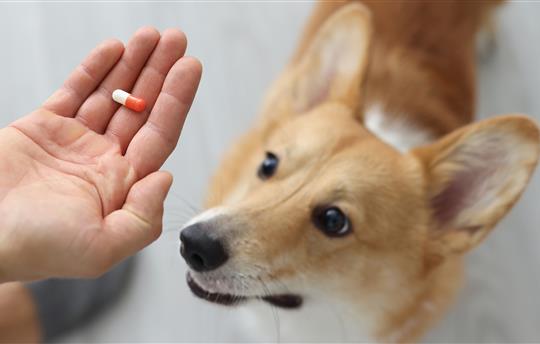Veterinary Prescription Label Requirements: A Comprehensive Guide
6/24/2024

According to the American Pet Products Association, nearly 87 million U.S. households have pets, and the health of those pets is a high priority. Beyond regular check-ups, vaccines, and medications for treating common ailments, pet care often includes managing chronic conditions like arthritis and gum disease, especially as pet life spans increase.
This combination of factors contributes to the amount of medications pet owners purchase each year. According to a 2022 report by the American Veterinary Medical Association, medications comprised approximately 30% of total dollars spent on veterinary care, making medications an important component of overall pet care. Additionally, households spent an average of $326 per year on veterinary care — veterinary services plus medication — which comprised 33% of total annual spending on household pets.
Unfortunately, however, as the amount of dispensed medications increases, so do medication errors. This makes effective communication a critical consideration — starting with the veterinary prescription labels.
How medication errors occur
In a study conducted by the College of Veterinary Medicine at Cornell University, researchers found 560 cases of medical errors. Of these errors, 15% resulted in harm to the patient and 8% resulted in permanent harm or death. Medication errors were the most common.
Medication errors can occur for a variety of reasons. Regardless of whether a doctor or technician performs the dispensing, confusion from similar drug names or using abbreviations and acronyms instead of actual drug names can lead to mistakes.
Errors can also occur when the pet owner dispenses medications at home. Unusual dosage requirements, medications that need to be taken with or without food, and medications that must be administered at a certain time of day can all lead to potential mix-ups.
Utilizing various forms of communication directed at both the provider and the patient can help minimize medication errors— starting with the prescription label itself.
Label requirements for veterinary prescriptions
The first step in minimizing veterinary medication errors is to ensure the prescription label contains the necessary information that corresponds with the medication in the prescription bottle.
Although the size of a veterinary prescription label is small, approximately 2 x 3 inches, the information required by the U.S. Food and Drug Administration (FDA) is extensive. Whether the information is preprinted or computer generated, the label is required to contain seven specific pieces of information, ranging from the veterinary practice name and contact info to directions on how to use the medication.
The container label must include the following information, as per the FDA, and must be in a type size no smaller than 6 point:
- The name of the veterinary practice, its address, and contact information
- The veterinarian's name, the patient's name and species, and the client's last name
- The date of the prescription and the expiration date of the medication
- The total amount (or quantity) of medication being dispensed
- If any refills are authorized
- The name of the medication (active ingredient) and its strength
- Directions on how to use the medication and cautions/precautions
This information may be on the veterinary label applied by the medication manufacturer, or on a label attached to the product by the veterinarian.
Additional label recommendations, considerations
Although the following conditions are not required by the FDA on veterinary prescription labels, they make these additional recommendations:
Minimize the use of medical abbreviations: Although they may save time, abbreviations are a common driver of veterinary medication errors.
Eliminate the use of leading and trailing zeros: Eliminating extra zeroes can help prevent pet owners from misreading the number — misinterpreting “5.0 mg” as “50 mg,” for example.
Human drug prescriptions for animals: The entire prescription should be written out (or verbally stated) because some pharmacists may be unfamiliar with veterinary abbreviations.
While the FDA requires a minimum type size of 6 point, Consumer Reports found in their research that a prescription label is more effective when:
- Using an easy-to-read 12-point type, with the patient's name, drug name, and drug instructions in the largest letters
- Printing related warnings directly onto patient labels in a large typeface; warnings in very small type can be difficult to read or find
- Displaying the drug information prominently at the top of the label for easy reading; place the pharmacy's information — name, address, and phone number — at the bottom of the label
Effectively designed veterinary prescription labels help the veterinary staff to dispense medications safely and accurately. In addition, by providing a pet’s owner with caregiving and proper medication storage information, properly generated labels assist pet owners in ensuring their pets remain healthy once home.
The information presented in this blog was originally published by RRD’s United Ad Label, a label manufacturing company that works with veterinary practices and animal hospitals across the country to provide effective veterinary label solutions. In addition to a stock line of veterinary labels, United Ad Label can create a custom label to a customer’s exact specifications.